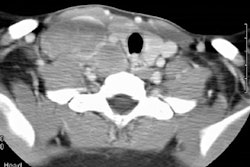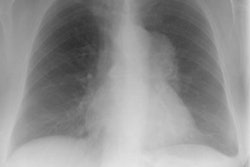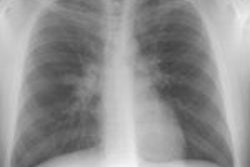Mayo Clin Proc 1990 Feb;65(2):151-163. Clinical implications of the histopathologic diagnosis of pulmonary lymphomatoid granulomatosis.
Pisani RJ, DeRemee RA
We reviewed the epidemiologic, laboratory, roentgenographic, pulmonary function, and survival data from 28 patients who had a histologic diagnosis of lymphomatoid granulomatosis (LG) with involvement of the lungs. The mean age at the time of diagnosis was 51 years, and the male-to-female ratio was 3:2. Ten patients had other underlying diseases before LG was diagnosed. The most prominent symptoms were cough, dyspnea, fever, and rash, which were usually present for several months before diagnosis of LG. Multiple nodules were detected on a chest roentgenogram in 68% of the patients. Immunoglobulin concentrations were abnormal in 8 of 12 patients studied. Although bronchoscopy established the diagnosis in approximately a third of the patients who underwent this procedure, open-lung biopsy was uniformly diagnostic. The median survival was 72 months, with follow-up through 12 years. In 11 patients, the original diagnosis of LG was eventually changed to lymphoma. In five of these patients, the change in diagnosis was based on immunohistologic data obtained shortly after LG was discovered. Lymphoma diagnosed in this way was associated with a better prognosis than lymphoma diagnosed on the basis of conventional histopathologic findings. In three patients, solid tumors eventually developed. The diversity of clinical outcomes and frequent revisions of the diagnosis led us to consider the possibility that LG may also represent a histopathologic finding that occurs transiently in several disease processes.
PMID: 2304362, MUID: 90157568



